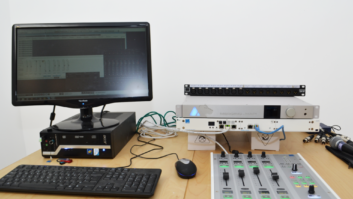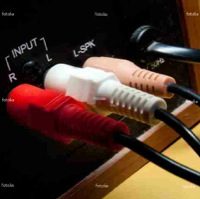Having previously revealed the factors holding back adoption of audio networking, here David Davies looks at the advantages of IP compared to analogue systems and the importance of standardisation.
Client requests constitute the factor most likely to encourage those not using audio networking to undertake the transition (accounting for 21% of survey responses), followed by better education about the benefits (17%), networking being made easier/quicker (16%), networking becoming cheaper (15%), and a better choice of products (13%).
In general, manufacturer responses concur with the need to provide accessible, easy-to-implement networked solutions whose advantages over traditional point-to-point connectivity can be explained simply and swiftly. “It is important to make solutions that are easy to understand and install, thereby removing the mystery of IP,” says Frank Frederiksen, MD of Barix. “Secondly, the solutions must be affordable as they will always be compared with an analogue system. For the industry in general, we must be better in educating customers about the advantages IP brings in terms of functionality, maintenance and future enhancement options. It is clearly the future, but if [industry players] are not good enough to communicate the benefits of the solutions they will not be adopted.”
Standardisation between different technologies – thereby guaranteeing increased interoperability – is widely regarded as a big piece of the puzzle in terms of making networking easier and quicker. The impact of the Audio/Video Bridging (AVB) and latterly Time Sensitive Networking (TSN) standards projects requires no elaboration at this point, while several vendors allude enthusiastically to AES67, which effectively provides an interoperability meeting point between existing networking solutions.
“The key to widespread adoption of any new technology is standardisation,” maintains Pieter Schillebeeckx, product director at TSL Products. “In the case of AES67, ever since its publication [in September 2013] we have seen an increased level of activity by a large number of manufacturers.”
For James Gordon, CEO of audio console group AudioTonix and MD of DiGiCo, “one of the challenges for customers looking at the AoIP market is the number of possible solutions with no clear winner. Hopefully this will reduce and the arrival of AES67 as an approved standard should help.”
Changing the conversation
Meanwhile, there is a general feeling that less generic conversation about networking per se would be useful to the consumer and end-user. Instead, there might be greater value to be extracted from more talk about specific applications and case studies where networking has been shown to have a positive impact.
“Keep in mind that any installation that does not meet the needs of the end user efficiently or effectively is what should be avoided,” says Justin O’Connor, product manager, audio products for Biamp Systems. “Not keeping this as the main objective, and allowing only budget constraints to determine which of the end users’ needs will be addressed, will result in a poor fixed installation – regardless of whether it is networked or not.”
“Our goal isn’t necessarily to accelerate networking usage for the sake of promoting audio networking, but to help bring high-quality products and techniques that truly help our customers and their businesses,” says Trevor Donarski – product line manager, software and tools for Bose Professional. Having said that, “from what we have seen, networked audio can save time and bring flexibility and futureproofing to even basic installations”.
“I don’t think we view networking as a cause to advance, but instead as another example of how we give our business partners the tools and flexibility to develop solutions that bring value to their customers,” says Erik Tarkiainen, vice president of global marketing, at Harman Professional.
Nonetheless, the domino effect will surely exert itself as more compliant devices emerge onto the market. “Adoption will be driven by the multiplicative factors of the network effect,” continues Tarkiainen. “The more devices that support networking, the more value to the network, which leads to more adoption, which leads to cost efficiencies that come with scale.”
Vinnie Macri, product marketing manager for Clear-Com, observes: “As the progression of products that are easy to use over an IT network continues from manufacturers, and those manufacturers who embrace standardised audio networking protocols continue and that control interoperability between devices happens, the possibility for wider acceptance may come. The decision will always be based on application and workflow.”
Biamp audio solutions
Harman Professional
Clear-Com real-time communications solutions
Dante audio networking
Barix IP solutions
Bose Professional IP systems
TSL Products







